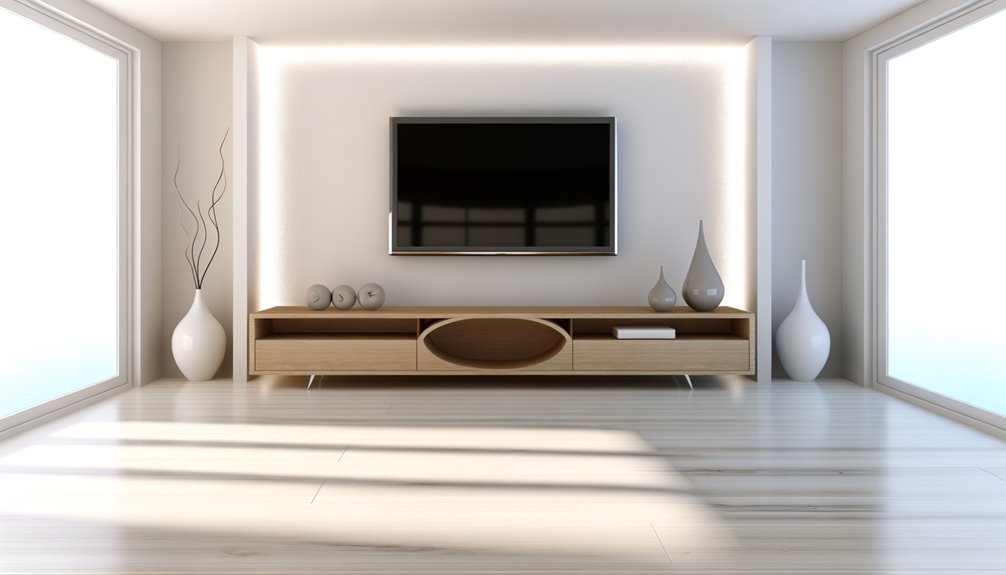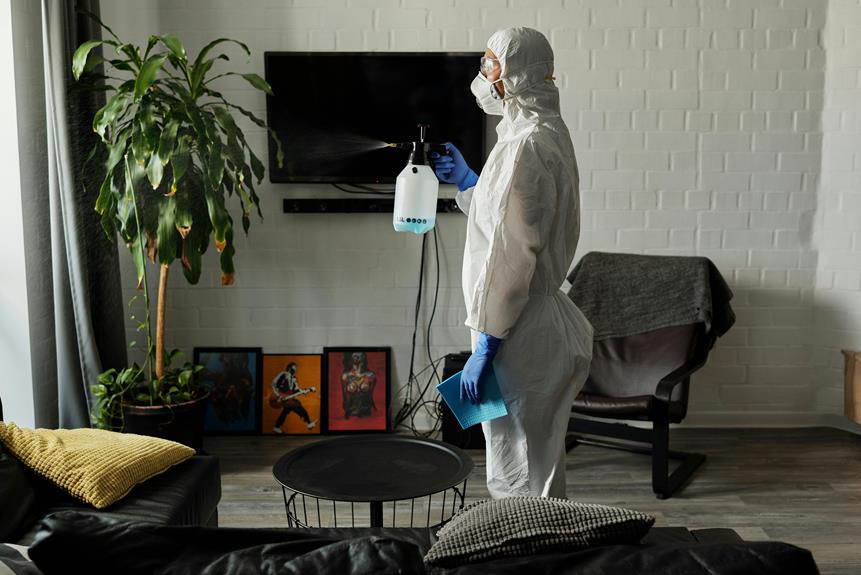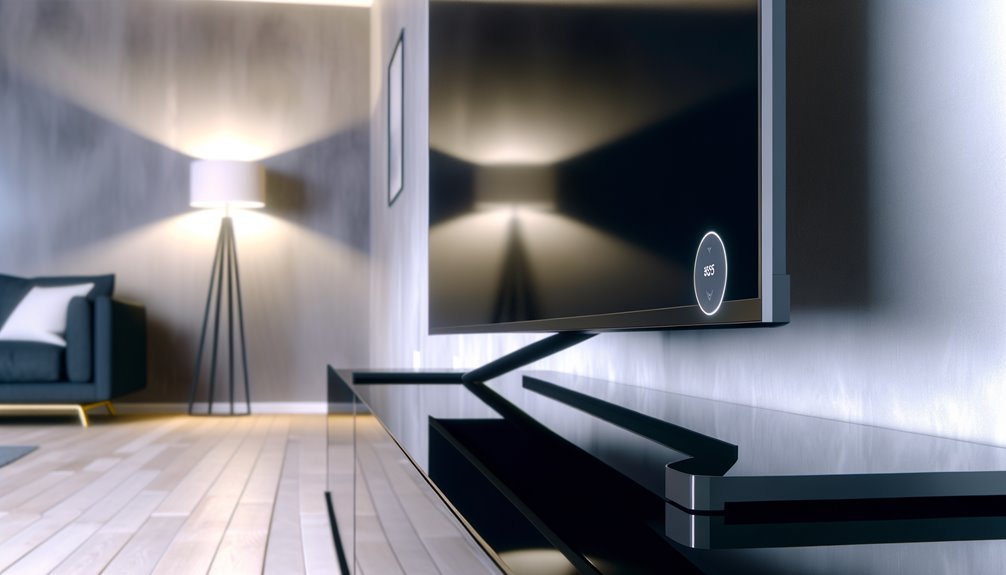Wall mounting a TV offers numerous benefits such as enhancing room aesthetics through a clean, minimalist look, maximizing space in smaller areas, and providing ideal viewing angles for a superior experience. Key considerations include selecting the proper wall type—such as brick or plasterboard, using a stud finder for secure mounting, and ensuring the wall is near power outlets for easier connectivity. It's important to choose a mounting bracket compatible with your TV's VESA standards, ensuring stability and safety. If safety and cable management are prioritized, the overall setup will not only look tidy but also prevent potential accidents. Exploring further will reveal additional insights and best practices to enhance your installation process.
Benefits of Wall Mounting
Wall mounting a TV not only enhances the aesthetics of a room by creating a clean, minimalist look but also maximizes the available living space, particularly beneficial in smaller homes.
This method offers ideal viewing angles, reduces clutter, and simplifies cable management by hiding the cables.
Additionally, mounting a TV enhances safety, keeps it away from heat, and can prolong its lifespan.
Choosing the Right Wall
Having explored the benefits of wall mounting a TV, the next step involves selecting an appropriate wall that assures both stability and aesthetic appeal.
Assess the type of wall—brick, plasterboard, or concrete—and use a stud finder to locate wooden studs for secure mounting.
Guarantee proximity to power outlets and manage cables effectively.
Consider viewing angle and avoid obstructions like windows to prevent glare.
Understanding VESA Standards
Understanding VESA Standards is vital when planning to mount a television. VESA standards determine the pattern of mounting holes on the back of your TV to guarantee compatibility with wall mounts.
Check the TV's specifications for VESA dimensions and weight to select the right mounting bracket. Non-VESA TVs might need universal brackets for secure attachment, essential for safe and stable TV installation.
Installation Step-by-Step
Once you have chosen the correct wall mount for your TV, the next step is to install it securely.
First, use a stud finder and drill holes at marked positions to attach the bracket. Verify it's level using a spirit level.
Securely mount the TV bracket, designed to support the weight, and double check stability.
Finally, carefully lift your flat screen TV onto the bracket.
Managing Cables and Safety
To guarantee both aesthetics and functionality after mounting your TV, proper management of cables and attention to safety are essential.
Plan cable routing and use cable covers for concealing wires. Ascertain accessible, secure connections for electrical cables and future use.
Employ safety straps, especially in high-traffic areas, and educate on TV safety precautions to prevent accidents involving children or pets.
Professional Installation Options
Many homeowners opt for professional installation services to confirm their TV is mounted securely and in compliance with safety standards.
Experienced engineers assess wall construction to verify ideal weight support and use transparent pricing.
The service includes meticulous cable management, enhancing home aesthetics.
A 12-month warranty provides additional security, affirming the reliability of the securely mounted TV through professional installation.
Frequently Asked Questions
How Much Should It Cost to Mount a TV on a Wall?
Mounting costs vary based on bracket types, wall materials, and whether you choose professional installation or DIY approaches. Prices range from $75 to $300, including potential additional costs for equipment and complex setups.
How Much Does It Cost to Get a TV Mounted on a Wall?
TV mounting costs typically range from $100 to $300 for professional installation. DIY options cost $20 to $100, plus tools. Factors include wall mount types, cable management, and mounting height considerations.
Is Wall Mounting a TV a Good Idea?
Wall mounting a TV offers numerous benefits, including space-saving solutions, enhanced aesthetic appeal, and improved viewing angles. Safety considerations and cable management are also improved, with options for both DIY installation and professional services depending on wall types.
How Do You Tell if Your Wall Can Support a TV?
To assess wall support capacity, identify wall types and material using a stud finder. Check weight limits, guarantee mounting brackets align with studs, and consider installation height, cable management, safety concerns, and viewing angles for ideal aesthetics.
Conclusion
In summary, wall mounting a television offers aesthetic and space-saving advantages while also potentially enhancing viewing dynamics. Adherence to VESA standards guarantees compatibility and safety, and careful selection of wall type and proper installation are paramount. Cable management contributes to both safety and aesthetics, maintaining a clean and organized space. For those lacking confidence in their technical skills, professional installation services provide a reliable alternative, assuring both functionality and structural integrity.



